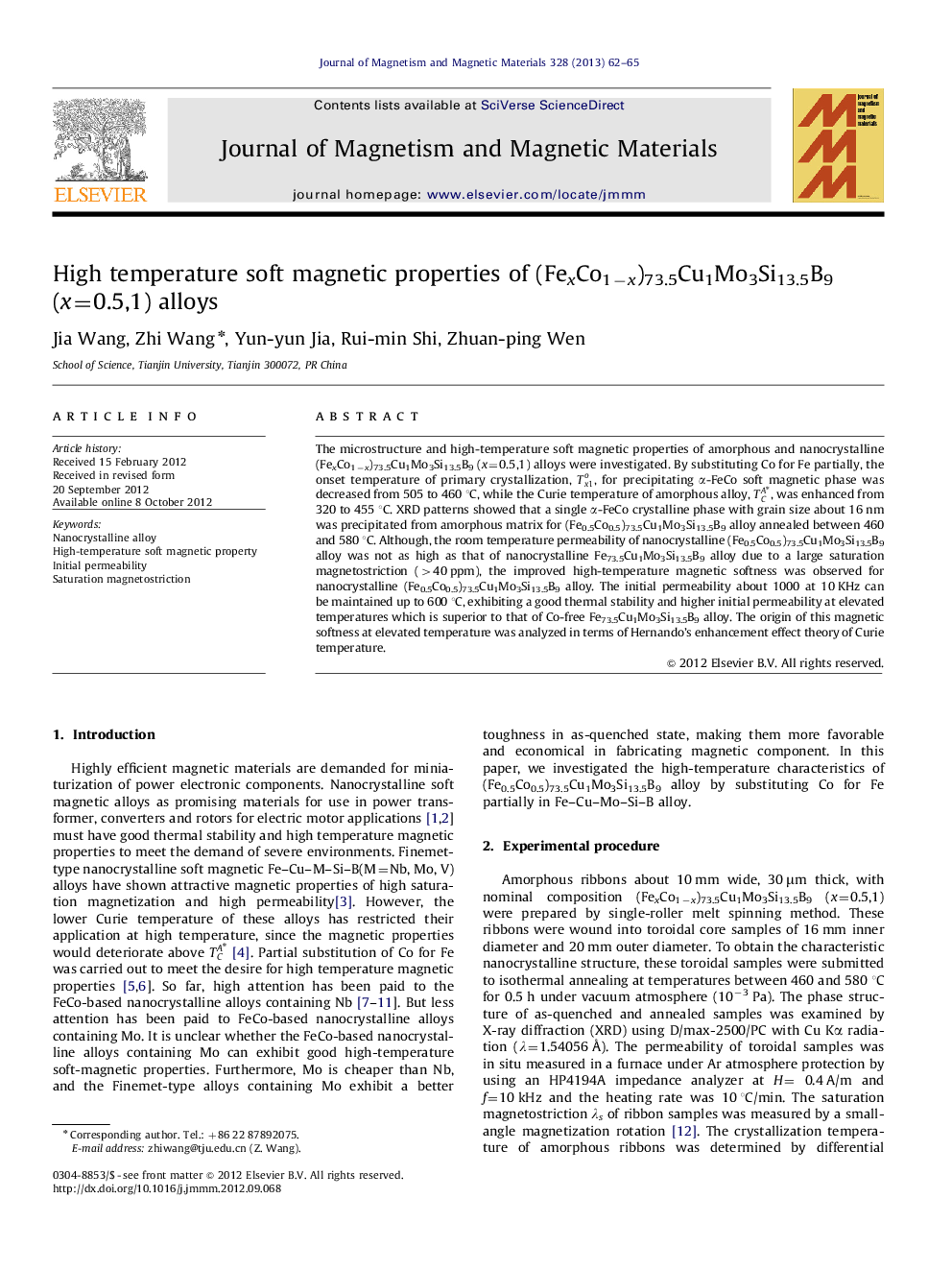| Article ID | Journal | Published Year | Pages | File Type |
|---|---|---|---|---|
| 1800304 | Journal of Magnetism and Magnetic Materials | 2013 | 4 Pages |
The microstructure and high-temperature soft magnetic properties of amorphous and nanocrystalline (FexCo1−x)73.5Cu1Mo3Si13.5B9 (x =0.5,1) alloys were investigated. By substituting Co for Fe partially, the onset temperature of primary crystallization, Tx1o, for precipitating α-FeCo soft magnetic phase was decreased from 505 to 460 °C, while the Curie temperature of amorphous alloy, TCA⁎, was enhanced from 320 to 455 °C. XRD patterns showed that a single α-FeCo crystalline phase with grain size about 16 nm was precipitated from amorphous matrix for (Fe0.5Co0.5)73.5Cu1Mo3Si13.5B9 alloy annealed between 460 and 580 °C. Although, the room temperature permeability of nanocrystalline (Fe0.5Co0.5)73.5Cu1Mo3Si13.5B9 alloy was not as high as that of nanocrystalline Fe73.5Cu1Mo3Si13.5B9 alloy due to a large saturation magnetostriction (>40 ppm), the improved high-temperature magnetic softness was observed for nanocrystalline (Fe0.5Co0.5)73.5Cu1Mo3Si13.5B9 alloy. The initial permeability about 1000 at 10 KHz can be maintained up to 600 °C, exhibiting a good thermal stability and higher initial permeability at elevated temperatures which is superior to that of Co-free Fe73.5Cu1Mo3Si13.5B9 alloy. The origin of this magnetic softness at elevated temperature was analyzed in terms of Hernando's enhancement effect theory of Curie temperature.
► Substituting Co for Fe partly in FeCuMoSiB alloy improved the high-temperature magnetic softness. ► For nanocrystalline (Fe0.5Co0.5)73.5Cu1Mo3Si13.5B9 alloy μi above 103 at 10 KHz can hold up to 600 °C. ► The origin of magnetic softness at elevated temperature was systematically analyzed. ► Decreasing in room temperature μi for FeCoCuMoSiB alloy is due to the larger magnetostriction.
